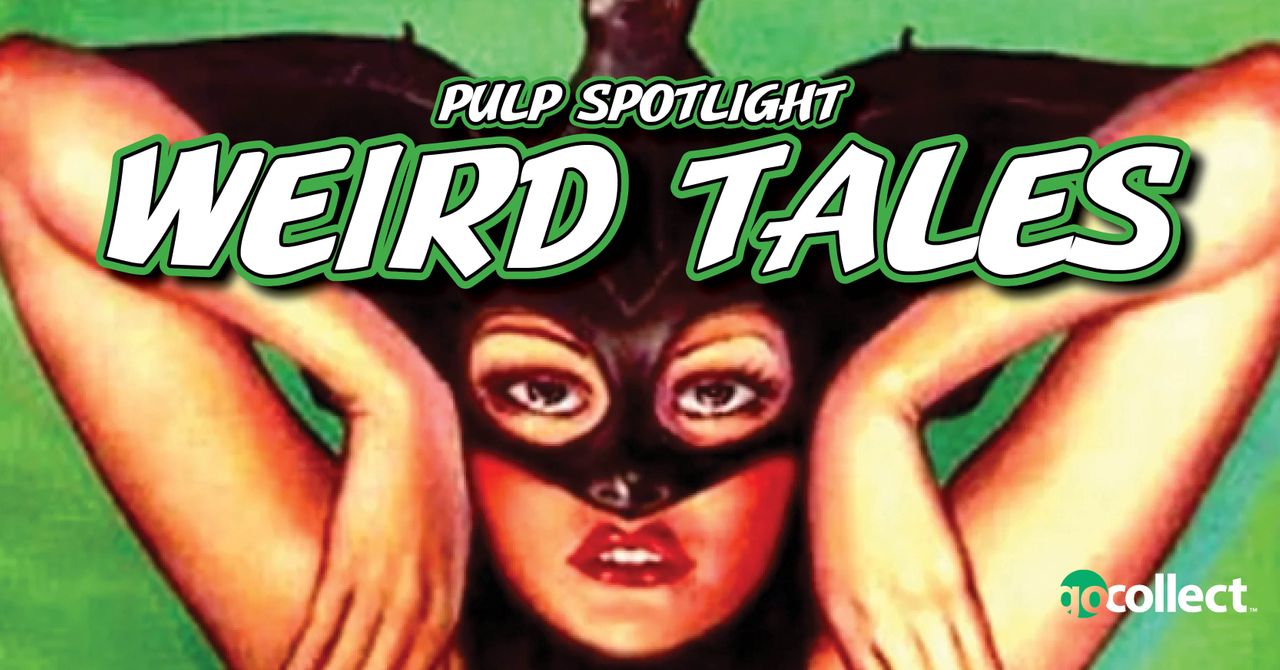
CGC began accepting pulp magazines for grading just a few months ago, with all-new slabs designed to fit the digest sized magazines. Recent sales in Heritage Auctions are turning eyes toward this new and potentially lucrative collectible. It’s important to be in the know, though, so let’s take a look at the key issues of Weird Tales with the best investment potential.
Weird Tales
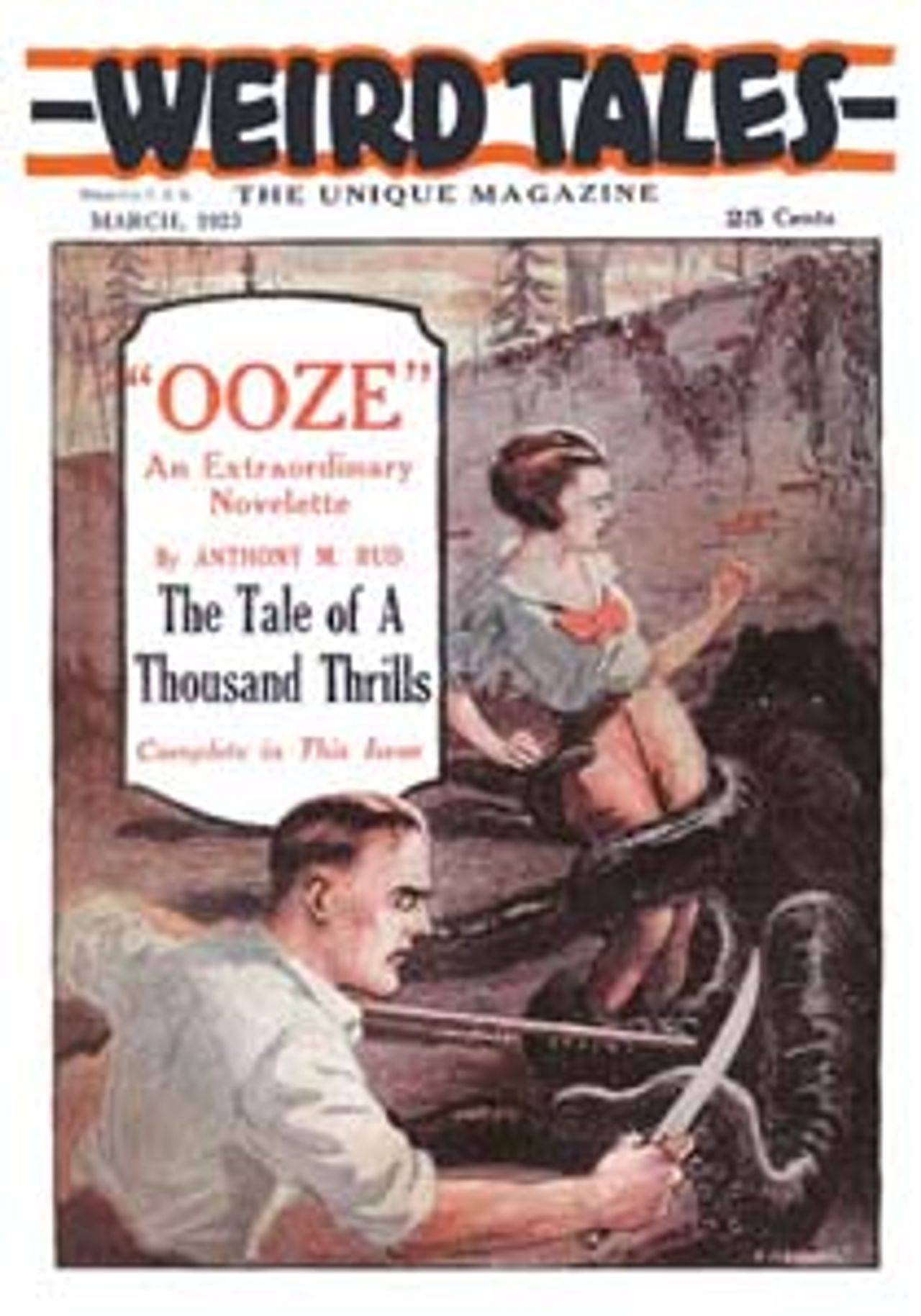 Weird Tales began publication with Weird Tales #1 cover dated March 1923. Initially published by The Rural Publishing Co. and edited by Edwin Baird, the magazine was shortly sold to The Popular Fiction Co., which began publishing new issues in November 1924. This also marks the start of Farnsworth Wright’s long tenure as the publication’s editor. Two key features to look for when ascertaining Weird Tales for value are authors (particularly first appearances of popular characters) and cover artists.
Weird Tales began publication with Weird Tales #1 cover dated March 1923. Initially published by The Rural Publishing Co. and edited by Edwin Baird, the magazine was shortly sold to The Popular Fiction Co., which began publishing new issues in November 1924. This also marks the start of Farnsworth Wright’s long tenure as the publication’s editor. Two key features to look for when ascertaining Weird Tales for value are authors (particularly first appearances of popular characters) and cover artists.
H.P. Lovecraft
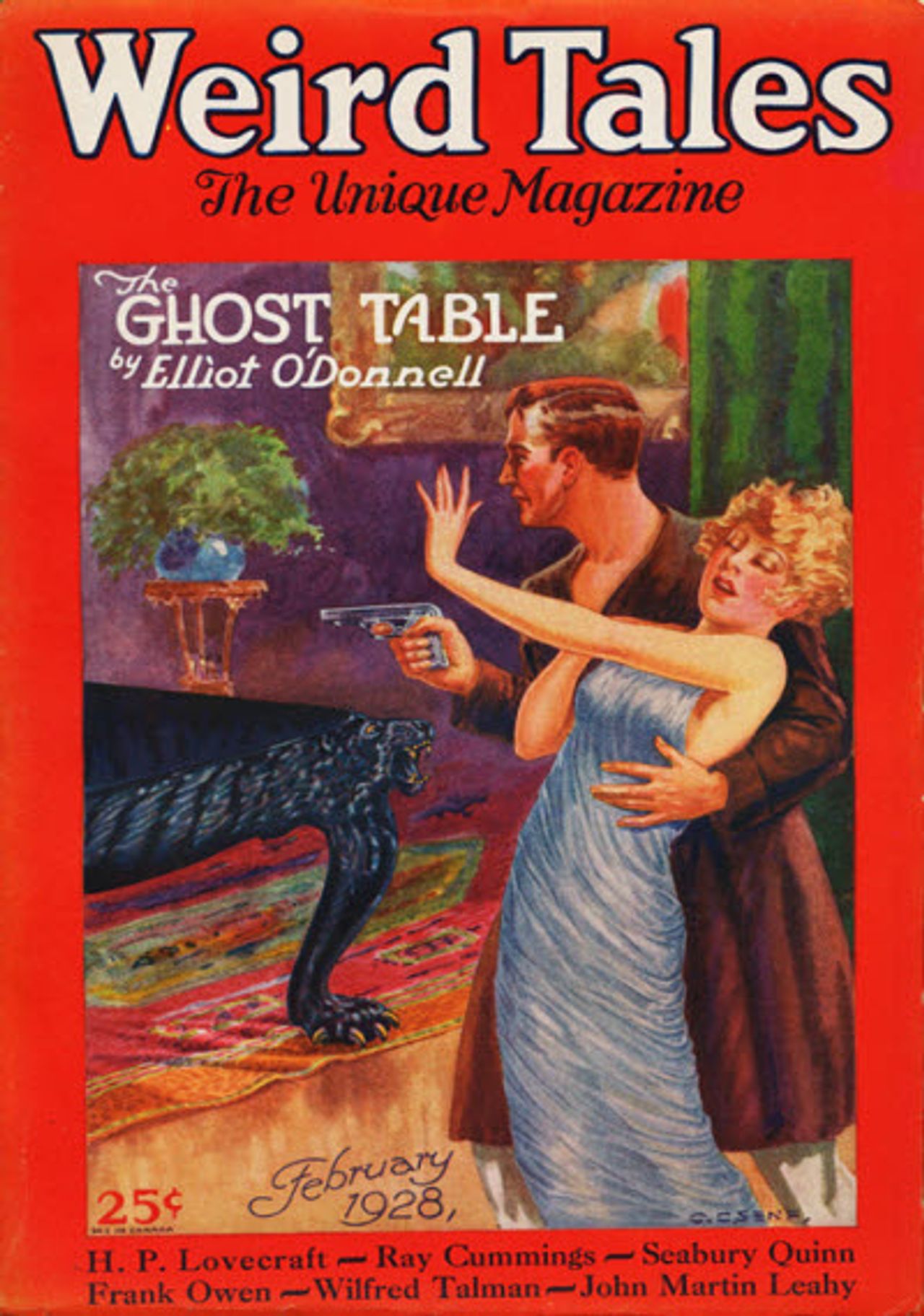 One of the earliest authors to appear in Weird Tales, and one of the authors most associated with the pulp magazine, was the gothic horror writer H.P. Lovecraft. His first story published in Weird Tales was “Dagon,” first appearing in Weird Tales #7, cover dated October 1923. There are as yet no graded copies. His most well-known work was “The Call of Cthulhu,” printed for the first time in Weird Tales #53, cover dated February 1928. So far, four copies have been graded by CGC, ranging from 5.5 to 1.0. No graded copies have yet sold. Lovecraft would go on to have dozens of short stories published for the first time in Weird Tales (and reprinted many times thereafter), as well as a tremendous amount of poetry.
One of the earliest authors to appear in Weird Tales, and one of the authors most associated with the pulp magazine, was the gothic horror writer H.P. Lovecraft. His first story published in Weird Tales was “Dagon,” first appearing in Weird Tales #7, cover dated October 1923. There are as yet no graded copies. His most well-known work was “The Call of Cthulhu,” printed for the first time in Weird Tales #53, cover dated February 1928. So far, four copies have been graded by CGC, ranging from 5.5 to 1.0. No graded copies have yet sold. Lovecraft would go on to have dozens of short stories published for the first time in Weird Tales (and reprinted many times thereafter), as well as a tremendous amount of poetry.
Lovecraft remains a popular author to this day. In particular, stories existing in what has become known as the “Cthulhu Mythos” are widely read. Many of Lovecraft’s most important works appeared in the pages of Weird Tales, and issues with his stories are considered at least minor keys, with Weird Tales #53 being the one most coveted by collectors.
Robert E. Howard
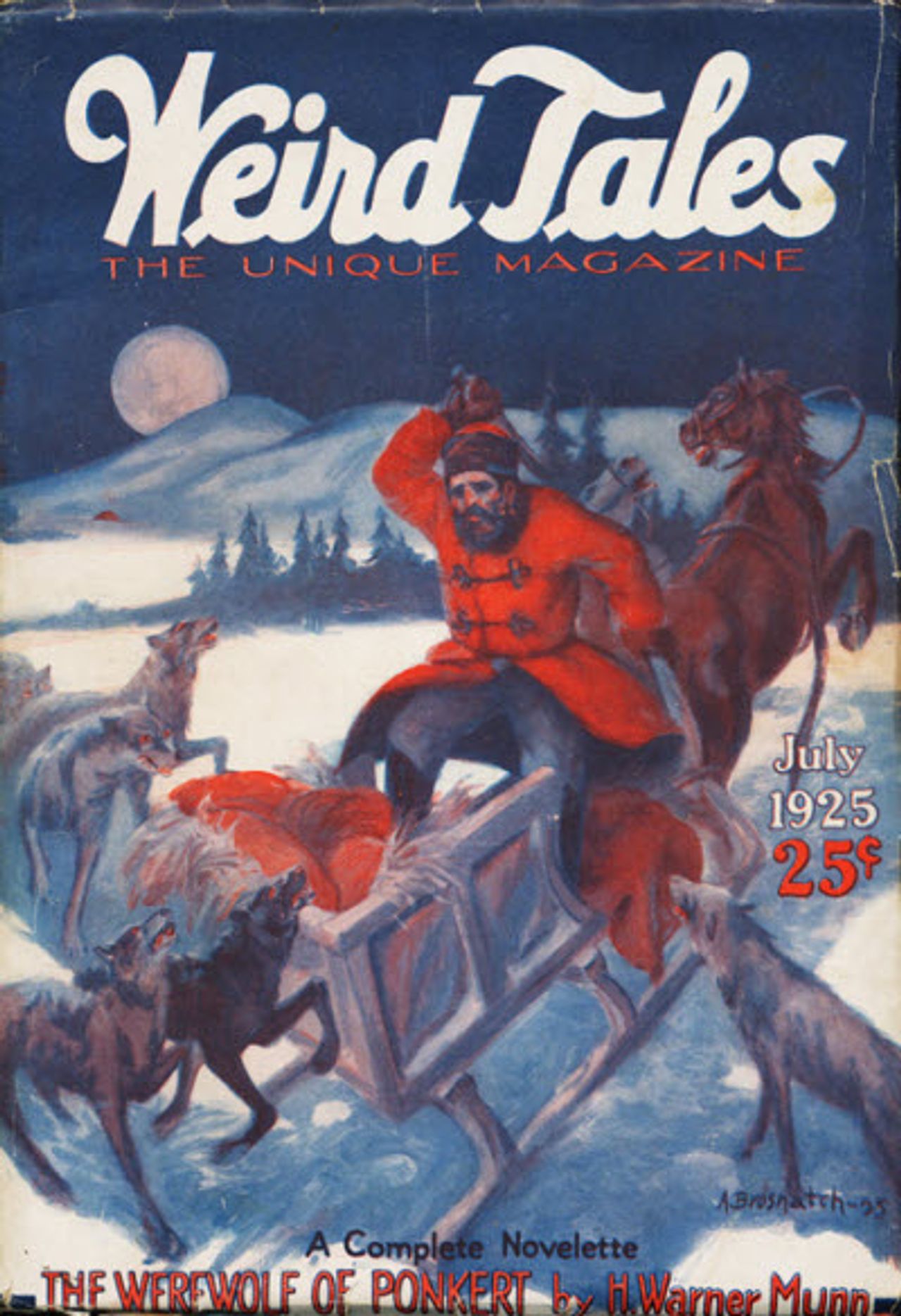 Widely regarded as the inventor of what became known as “sword and sorcery” stories, Robert E. Howard saw his first work published in Weird Tales #22, cover dated July 1925. Two copies have been graded so far, a 5.5 and a 4.0. Neither has sold. Howard’s first important creation – Solomon Kane – first saw print in Weird Tales #54. No copies have yet been graded.
Widely regarded as the inventor of what became known as “sword and sorcery” stories, Robert E. Howard saw his first work published in Weird Tales #22, cover dated July 1925. Two copies have been graded so far, a 5.5 and a 4.0. Neither has sold. Howard’s first important creation – Solomon Kane – first saw print in Weird Tales #54. No copies have yet been graded.
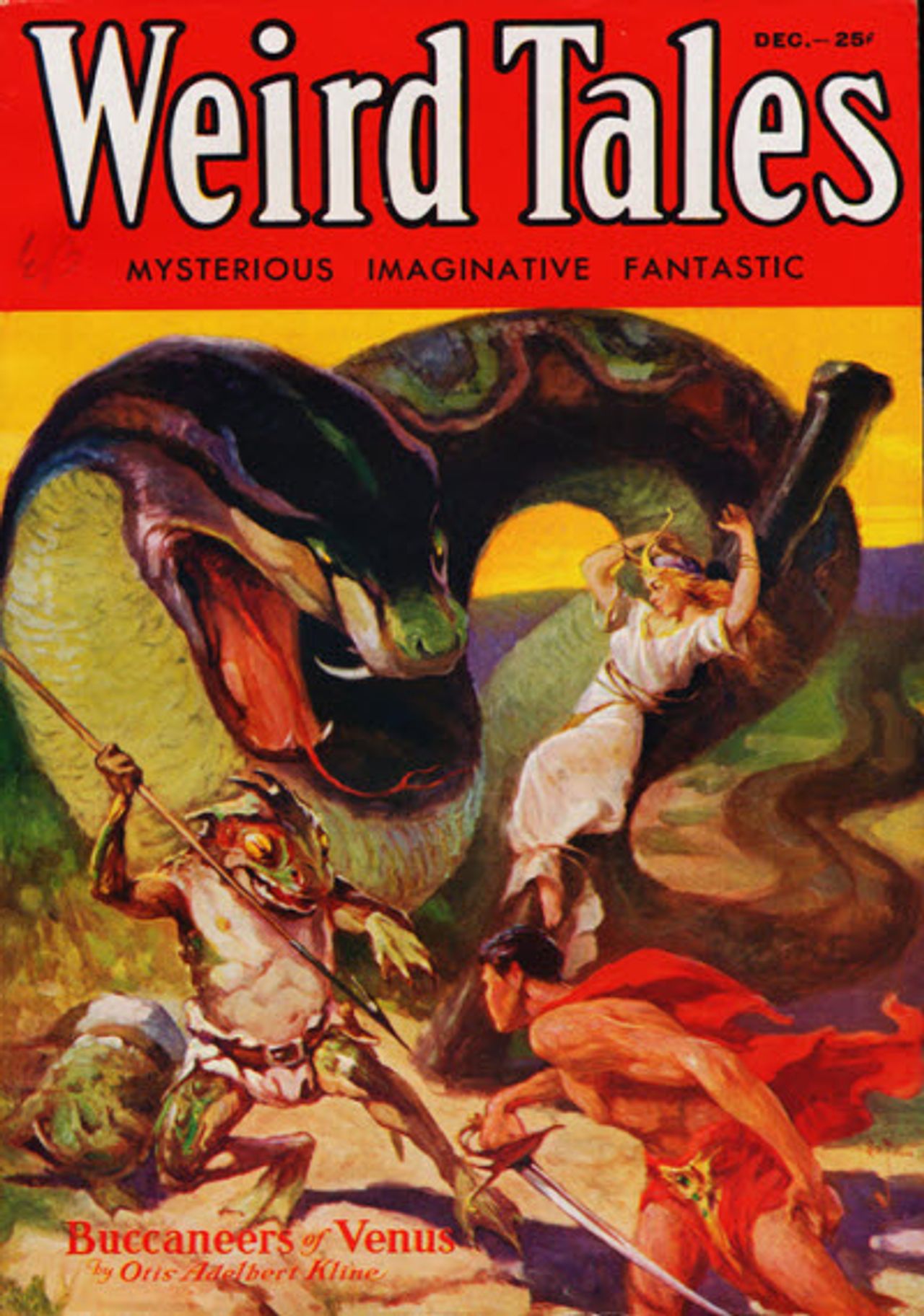 Howard’s most well-known creation is, of course, Conan. The first Conan story, “The Phoenix on the Sword,” was first published in Weird Tales #108, cover dated December 1932. Thirteen copies have been graded at this point, and it is highly likely that many more will be in the future. Current grades range from 7.0 to 0.5. A 4.5 graded copy sold in the April 2 Heritage auction for $7,800. This is one of the most important key issues of Weird Tales, and collectors and investors should be seeking out copies.
Howard’s most well-known creation is, of course, Conan. The first Conan story, “The Phoenix on the Sword,” was first published in Weird Tales #108, cover dated December 1932. Thirteen copies have been graded at this point, and it is highly likely that many more will be in the future. Current grades range from 7.0 to 0.5. A 4.5 graded copy sold in the April 2 Heritage auction for $7,800. This is one of the most important key issues of Weird Tales, and collectors and investors should be seeking out copies.
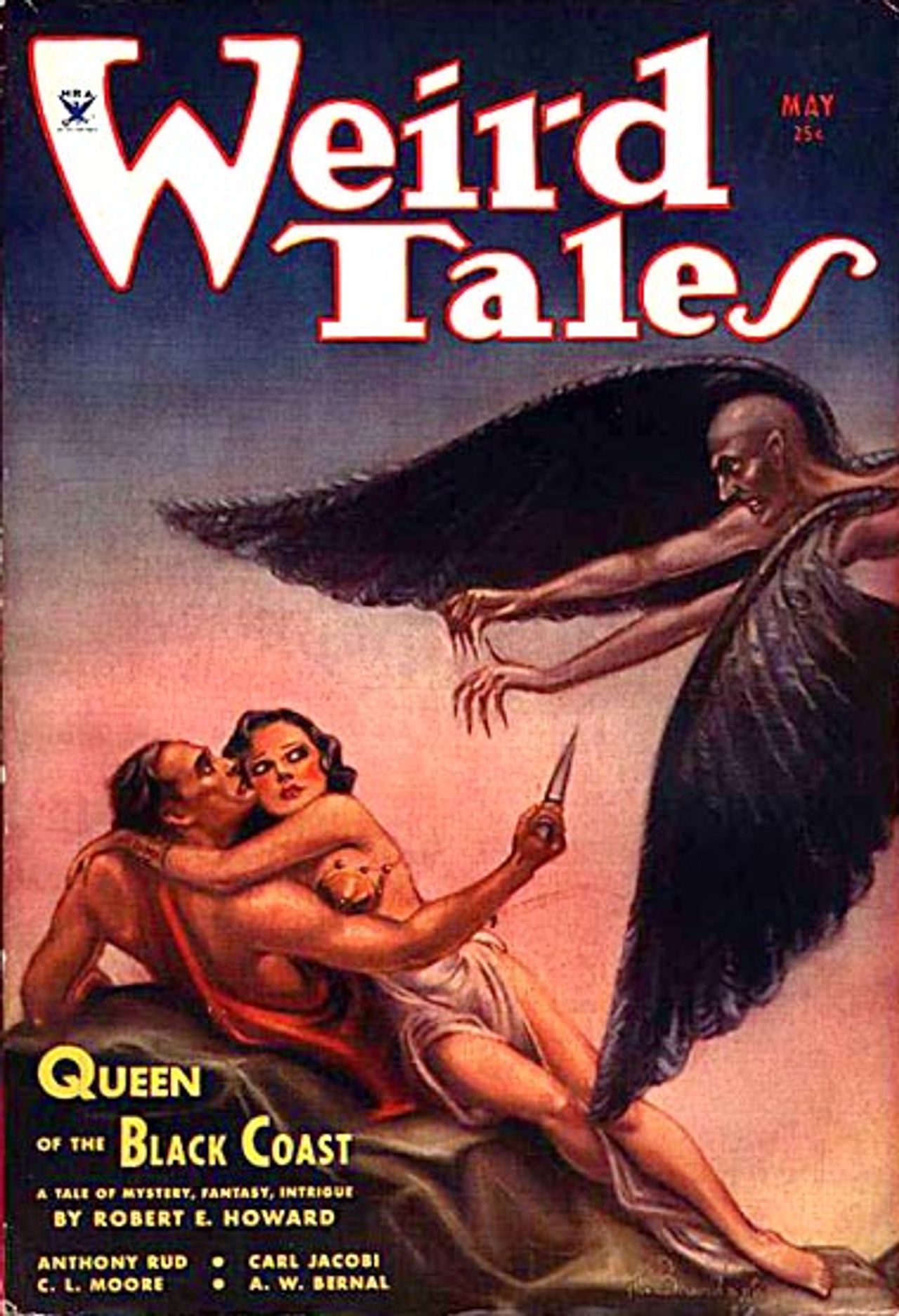 Conan graced the cover for the first time on Weird Tales #125. There are six graded copies ranging from 9.2 to 4.5. The cover was illustrated by Margaret Brundage (more on her in a bit), making this a key issue. A 9.0 graded copy will be open for bidding in Heritage Auction’s June 20-23 signature auction on May 31.
Conan graced the cover for the first time on Weird Tales #125. There are six graded copies ranging from 9.2 to 4.5. The cover was illustrated by Margaret Brundage (more on her in a bit), making this a key issue. A 9.0 graded copy will be open for bidding in Heritage Auction’s June 20-23 signature auction on May 31.
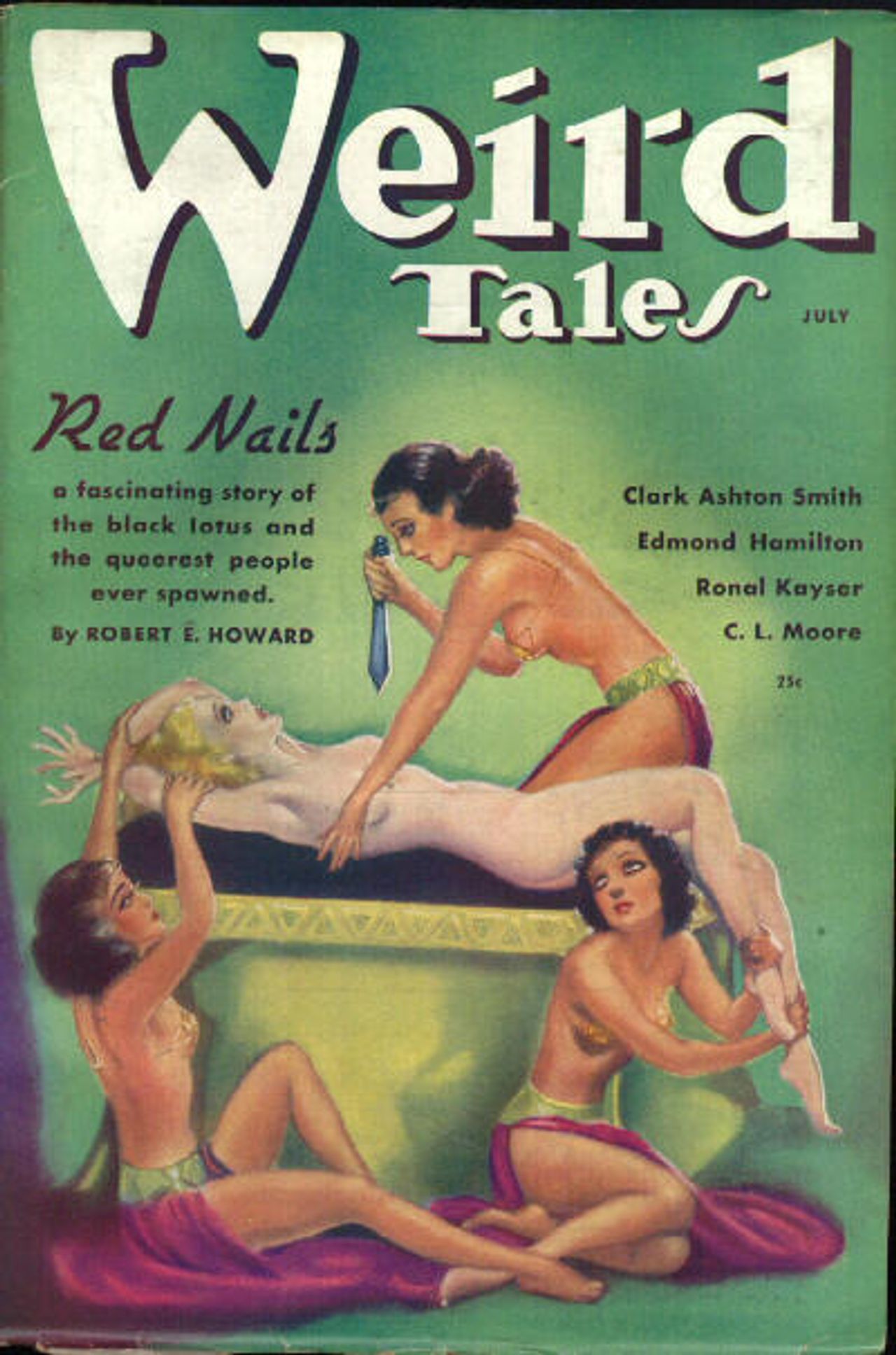 One of the favorite Conan stories to appear in print was “Red Nails,” with part one appearing in Weird Tales #151, another issue with a Brundage cover. There are nine graded copies, ranging from 7.0 to 2.5. None have yet sold, but don’t be surprised if one comes up soon. There are many issue of Weird Tales that contain Conan stories, and many of them are among the first to be graded by CGC.
One of the favorite Conan stories to appear in print was “Red Nails,” with part one appearing in Weird Tales #151, another issue with a Brundage cover. There are nine graded copies, ranging from 7.0 to 2.5. None have yet sold, but don’t be surprised if one comes up soon. There are many issue of Weird Tales that contain Conan stories, and many of them are among the first to be graded by CGC.
Margaret Brundage
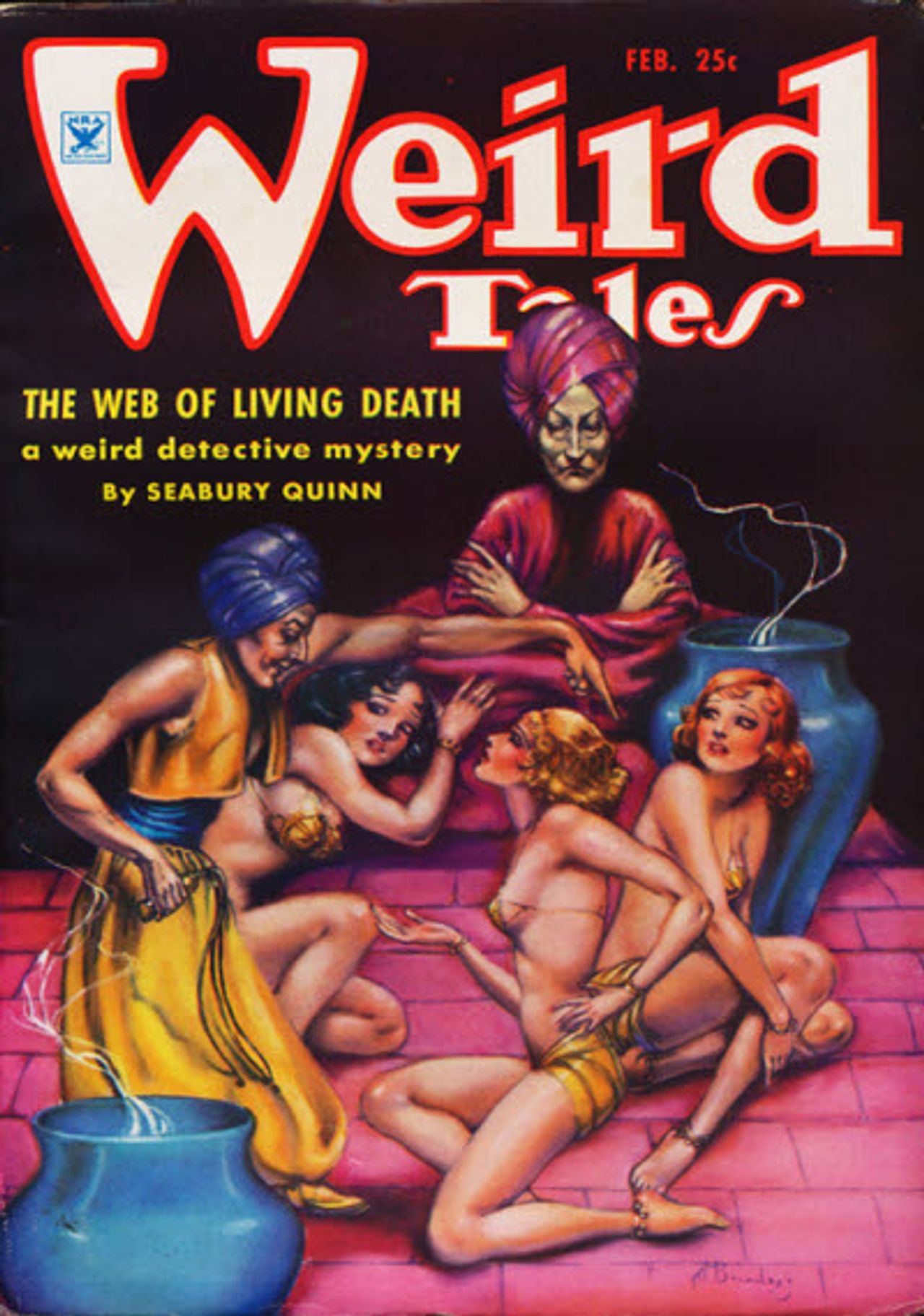 And now we come to the crème de la crème – Margaret Brundage. Above and beyond any other factor when it comes to the collectability and investment potential of issues of Weird Tales, Margaret Brundage covers are clear winners. Farnsworth Wright tapped Brundage to be the primary cover artist for Weird Tales beginning in 1932 and for six years she illustrated the vast majority of the covers.
And now we come to the crème de la crème – Margaret Brundage. Above and beyond any other factor when it comes to the collectability and investment potential of issues of Weird Tales, Margaret Brundage covers are clear winners. Farnsworth Wright tapped Brundage to be the primary cover artist for Weird Tales beginning in 1932 and for six years she illustrated the vast majority of the covers.
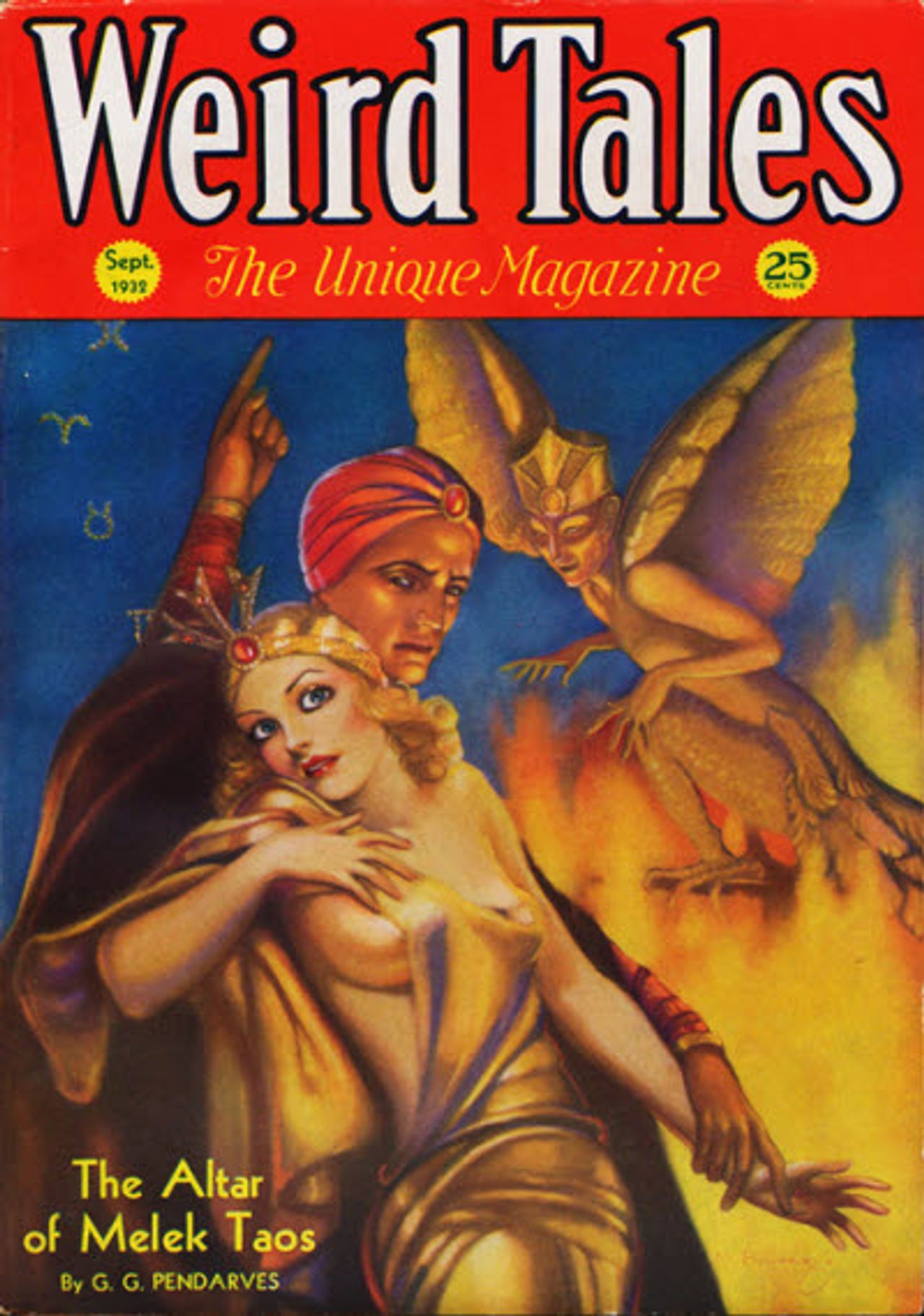 Her first issue – Weird Tales #105 – currently has five graded copies in the CGC census, ranging from 8.0 to 5.0. An 8.0 sold in the April 9 Heritage auction for $1,560, while a 5.0 sold in the April 30 Heritage auction for $480. One of the two 8.0 graded copies will be up for sale in Heritage’s June signature auction, giving us our first trend line for this issue.
Her first issue – Weird Tales #105 – currently has five graded copies in the CGC census, ranging from 8.0 to 5.0. An 8.0 sold in the April 9 Heritage auction for $1,560, while a 5.0 sold in the April 30 Heritage auction for $480. One of the two 8.0 graded copies will be up for sale in Heritage’s June signature auction, giving us our first trend line for this issue.
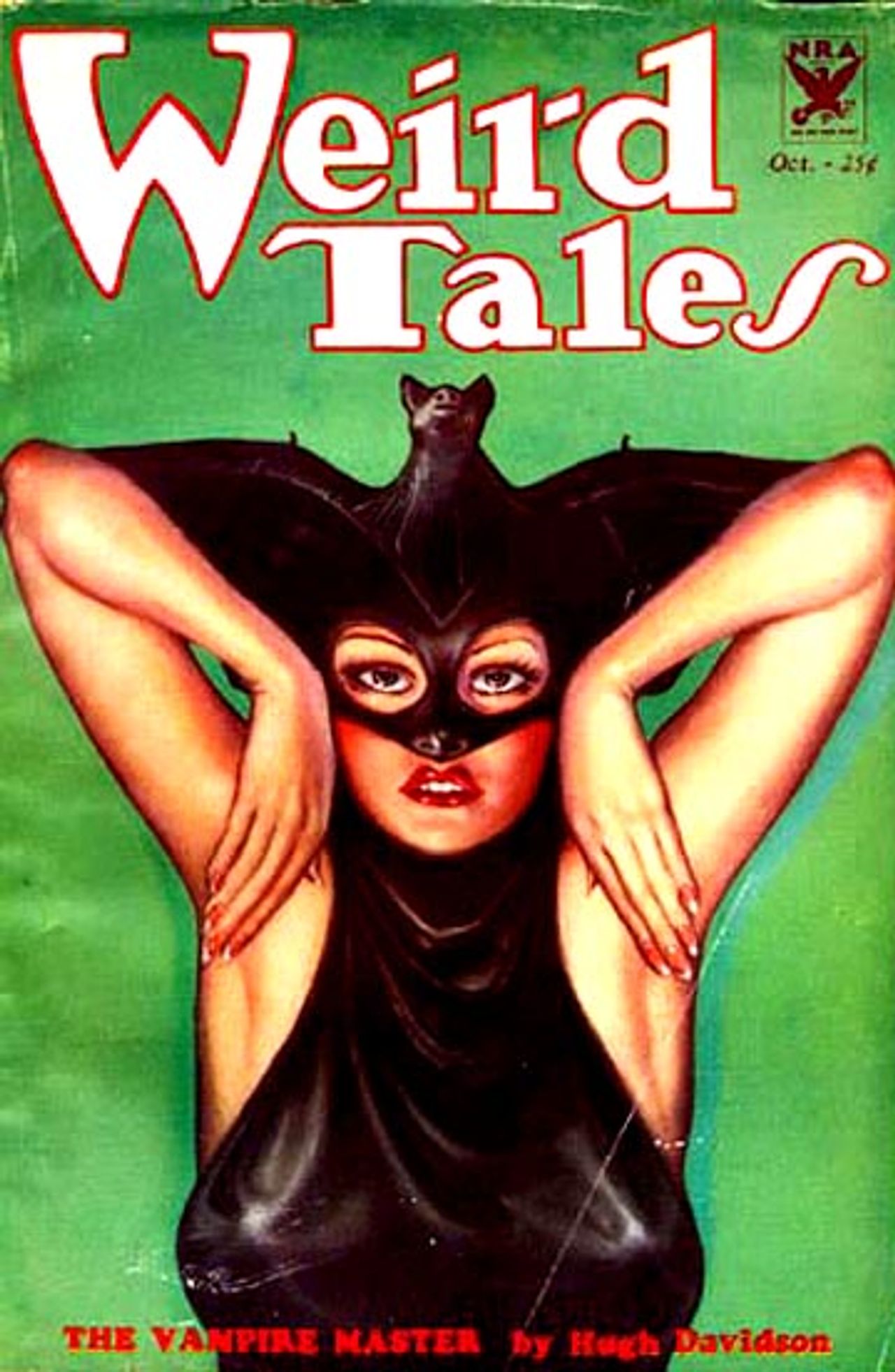 By far, the most coveted issue of the magazine has to be Weird Tales #118, cover dated October 1933. It sports Margaret Brundage’s famous “Batwoman” cover and also contains a Howard penned Conan tale and a Lovecraft story. There are 15 graded copies in the CGC census – more than any other issue – ranging from 8.0 to 2.0. Two copies sold in the April 7 Heritage auction. A 2.0 sold for $4,920, while a 7.0 went for an incredible $30,000. A 4.5 is up for bidding in the June Heritage signature auction, giving us another data point for this ultra-key issue.
By far, the most coveted issue of the magazine has to be Weird Tales #118, cover dated October 1933. It sports Margaret Brundage’s famous “Batwoman” cover and also contains a Howard penned Conan tale and a Lovecraft story. There are 15 graded copies in the CGC census – more than any other issue – ranging from 8.0 to 2.0. Two copies sold in the April 7 Heritage auction. A 2.0 sold for $4,920, while a 7.0 went for an incredible $30,000. A 4.5 is up for bidding in the June Heritage signature auction, giving us another data point for this ultra-key issue.
Other Considerations for Collectors
 While Brundage, Howard, and Lovecraft appear at this point to be the big three that collectors are most focused on, there are other artists and illustrators beginning to percolate as possible speculative investments. Among writers, Robert Bloch, a well-known horror writer for decades, features prominently in many issues of Weird Tales. C.L. Moore, one of the earliest and most prolific female science fiction and fantasy writers, got her start in Weird Tales, and her most famous creations – Northwest Smith and Jirel of Joiry – first saw print in the pages of the magazine.
While Brundage, Howard, and Lovecraft appear at this point to be the big three that collectors are most focused on, there are other artists and illustrators beginning to percolate as possible speculative investments. Among writers, Robert Bloch, a well-known horror writer for decades, features prominently in many issues of Weird Tales. C.L. Moore, one of the earliest and most prolific female science fiction and fantasy writers, got her start in Weird Tales, and her most famous creations – Northwest Smith and Jirel of Joiry – first saw print in the pages of the magazine.
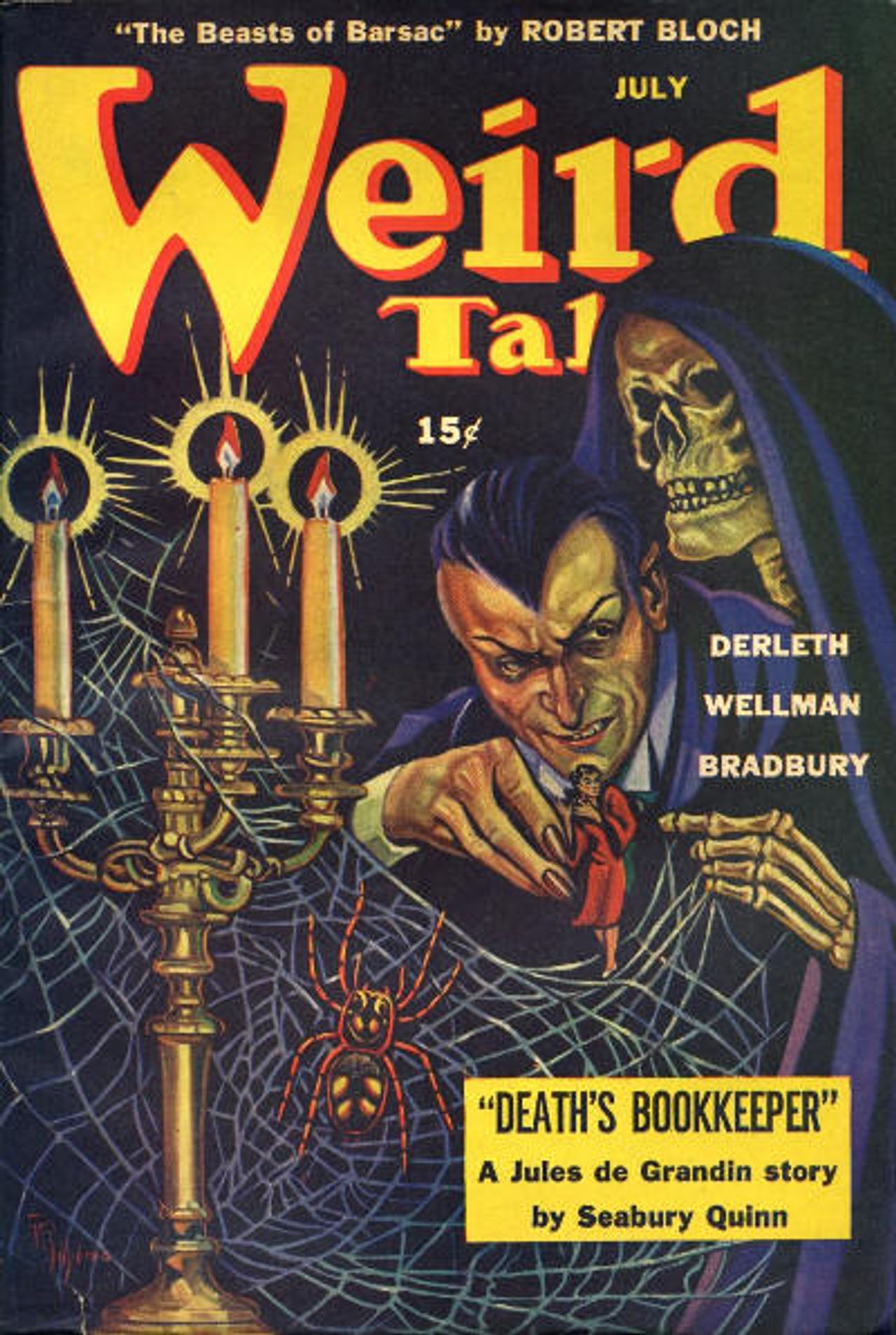 Ray Bradbury, one of the most celebrated science fiction and fantasy authors ever, had many of his earliest works – and the majority of stories that would form his first book, “Dark Carnival” – printed in the pages of Weird Tales beginning in 1942. While much of the focus of collectors has been on the Farnsworth Wright edited 1930s issues, we are beginning to see many of the issues containing Bradbury stories sent in to CGC for grading.
Ray Bradbury, one of the most celebrated science fiction and fantasy authors ever, had many of his earliest works – and the majority of stories that would form his first book, “Dark Carnival” – printed in the pages of Weird Tales beginning in 1942. While much of the focus of collectors has been on the Farnsworth Wright edited 1930s issues, we are beginning to see many of the issues containing Bradbury stories sent in to CGC for grading.
As collectors continue to focus on pulps, we’ll be keeping an eye on the growth of the CGC census and upcoming sales, looking for trends to keep you informed.
Do you collect pulp magazines? What are some of your favorites, and which series should we spotlight in the future?















